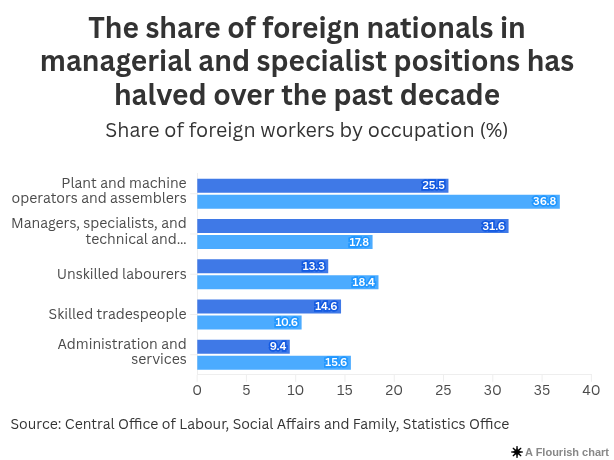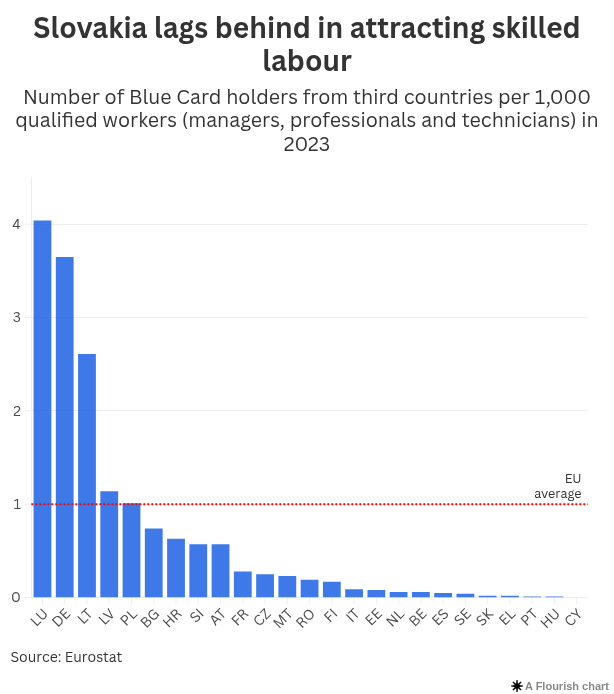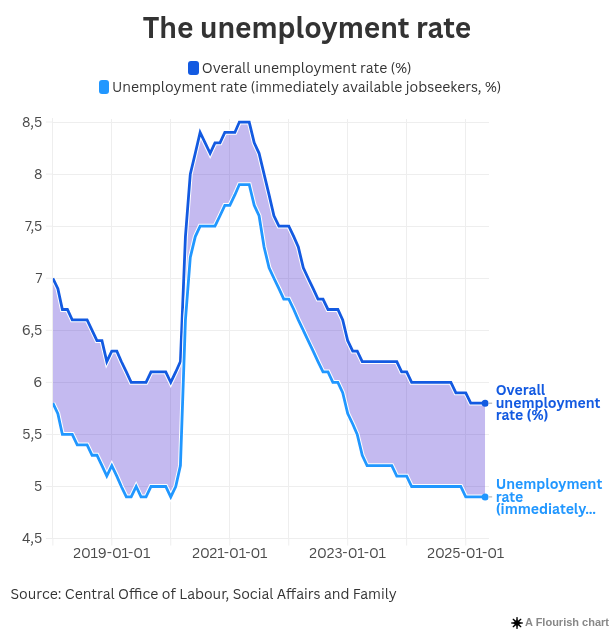The number of foreign workers in Slovakia rose to a record high in May, surpassing 125,000 despite mounting uncertainty over global trade. Compared with the previous month, the total increased by nearly 1,200, and year-on-year by almost 26,000 – a sign of continued reliance on foreign labour to fill persistent gaps in the
workforce.
Roughly half of Slovakia’s foreign labour force comes from Ukraine, Serbia and India, while the remainder arrive from neighbouring EU countries, the Philippines, and former Soviet republics. Yet over the past decade, the proportion of foreigners employed as managers, technicians or specialists has nearly halved. At the same time, the share of low-skilled and factory-floor jobs filled by migrants has grown markedly.
While Slovakia continues to benefit from this influx of workers – particularly in manufacturing – it is losing ground in the race to attract highly qualified professionals. In 2023, only 24 third-country nationals were granted a Blue Card, an EU-wide permit for skilled workers earning at least 1.2 times the average wage. By contrast, the Czech Republic issued over 500, and Poland more than 7,400.
Experts point to Slovakia’s cumbersome bureaucratic process as a key deterrent. Foreign nationals must navigate a thicket of residency and employment formalities – many of which must be completed prior to arrival – slowing down hiring and discouraging applicants in high-demand sectors.
The broader labour market showed signs of stagnation in May. The seasonally adjusted unemployment rate held steady at 4.9 percent, according to the Financial Policy Institute. However, the number of jobseekers immediately available to work rose for the second consecutive month, by more than 1,000 – the largest monthly increase since May 2021. Much of this rise was attributed to a reclassification of individuals previously enrolled in state-run activation schemes, who are now counted as available jobseekers.
Despite steady unemployment figures, job vacancies remained high, with more than 105,000 open positions across the country. Still, the inflow of new postings has begun to slow, suggesting that while demand for labour remains robust, employers may be growing more cautious amid geopolitical and economic uncertainty.
For now, the sheer volume of vacancies continues to cushion the Slovak economy. But without reforms to ease entry for high-skilled migrants, observers warn that Slovakia may find itself increasingly dependent on low-wage labour – and increasingly outpaced by its neighbours.


 Assembly of new Kia vehicles inside the production hall of Kia Slovakia in Teplička nad Váhom, near Žilina, on Wednesday, 15 January 2025. (source: TASR - Daniel Stehlík)
Assembly of new Kia vehicles inside the production hall of Kia Slovakia in Teplička nad Váhom, near Žilina, on Wednesday, 15 January 2025. (source: TASR - Daniel Stehlík)


